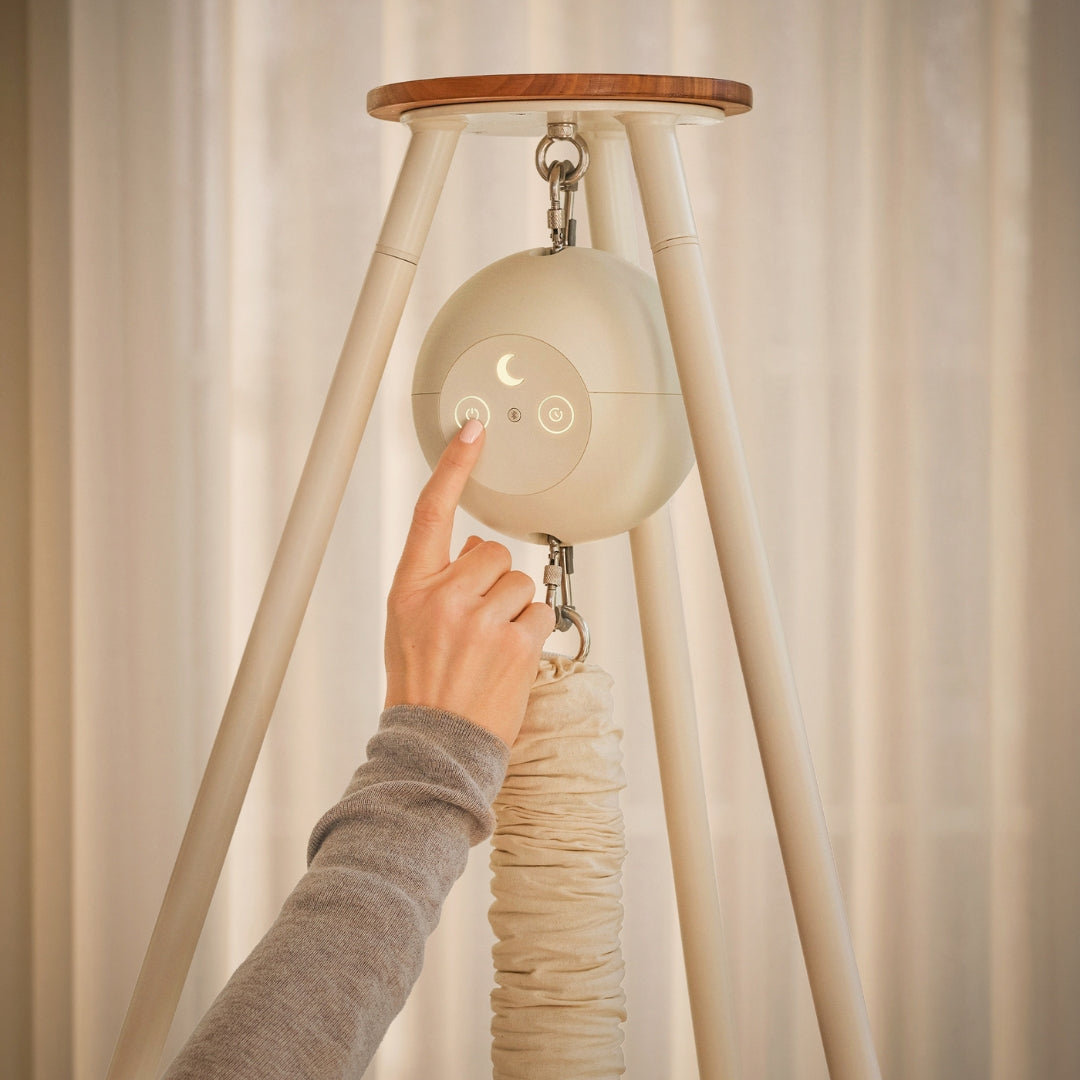


Sleep regression – a term that many new parents may be unfamiliar with at first.
Most moms and dads only begin thinking about it once their baby or toddler starts to have trouble falling asleep, staying asleep, and/or struggles to settle down again after waking up during the night.
What exactly is sleep regression? In this article, we explain what is behind these sudden sleep difficulties and why they may show up at different developmental milestones. We’ll also provide some helpful tips so you can support your baby through this phase in the best way possible.
My baby wakes up at night and won’t go back to sleep!
Most parents of babies and toddlers are familiar with this: your little one slowly starts to nap more regularly and begins to sleep for longer stretches of time during the night or maybe even through the night.
Suddenly, however, that amazing new routine seems to vanish overnight. Your child is now struggling to fall asleep, wakes up multiple times throughout the night, has restless sleep, and has a hard time settling down for naps.
The good news is that this sleep regression is only temporary! This shift in sleep patterns is linked to big developmental leaps, but once that developmental stage is complete, sleep usually returns to normal.
There are several phases in a baby’s life when they tend to wake more frequently, stop sleeping through the night, or resist naps during the day. The most common times for these regressions to occur are around:
-
4 months
-
8 months
-
1 year
This article covers sleep regression in general. If you would like more thorough information about the regressions at specific ages, you can find separate articles for:
Although sleep regressions occur at different ages and tend to be influenced by different milestones, there are some common signs that may appear regardless of age:
-
Increased appetite: Growing is hard work for a little one’s body! It takes a lot of energy, meaning your baby may be hungrier than usual.
-
Fussiness and clinginess: Babies may be more irritable and harder to soothe.
-
Short naps: Children who used to sleep for longer periods of time now may only be able to stay asleep for 20-30 minutes.
-
No longer sleeping through night: Similar to the above point, those who previously slept well may now struggle to stay asleep.
Sleep regressions occur during phases when babies are going through important developmental milestones. They grow both physically and mentally, becoming aware of the world around them and gaining the mobility necessary to explore it.
Physically, babies learn to roll, then crawl, and later how to walk. The world grows exponentially once they have the physical ability to navigate it on their own, experiencing their environment in all new ways.
In addition to the stimulation and learning that comes with physical movement becoming possible, they are also learning how to make sounds, babble, and eventually speak. This all creates a lot of excitement amongst their nervous system, making it much harder for them to finally calm down enough to fall and/or stay asleep.
As discussed above, sleep regressions usually go hand in hand with major developmental leaps, and often growth spurts.
Because of this, sleep regressions come in phases just as large developmental periods do. Babies often “practice” their newly acquired skills while asleep, which you may see through them rolling or moving around during sleep time.
Once their new skills are integrated and familiar, the sleep regression phase ends as well. Typically, sleep regressions last about two to six weeks.
At around 4 months, many babies go through significant developmental changes. They may start learning to roll and begin exploring objects using their hands and mouth.
This is also typically when REM sleep cycles develop, meaning sleep becomes lighter and babies wake more easily during sleep transitions.
Around 7-9 months, several things may begin to disrupt sleep: teething, major motor development, and increased emotional awareness.
Babies may start crawling, scooting, and pulling themselves up around this time. They also begin to distinguish people from others and form deeper emotional bonds to those in their life, which can lead to separation anxiety and cause nighttime distress.
Around the first birthday, sleep can become unpredictable again. Naps may begin to shorten, and nighttime waking may return.
Unfortunately, teething can still interfere with sleep at this age. Many babies also begin taking their first steps, which can be both exciting and overwhelming. However, this can cause the little one to have trouble unwinding and settling down, not wanting to stop exploring their new abilities.
For many exhausted parents, this is the big question. Here are some helpful tips:
-
Establish consistent nap and bedtime routines
-
Keep regular sleep schedules
-
Ensure your baby is eating enough to power their development phases and growth spurts
-
Avoid overtiredness by putting your baby to sleep before they are overly exhausted
-
A swaddle, sleep sack, or weighted sleeping bag can help soothe and provide comfort
Additionally, sticking to routines, even when things feel chaotic, can be a great help. Bedtime rituals – such as a warm bath, gentle massage, reading, or singing – can help your baby transition from a busy day to calm rest.
Routines help your baby feel safe by providing stability and consistency, as well as helping them recognize the signs that sleep time is coming soon.
If naps become short or difficult:
- Reduce external stimulation (e.g. darkening the room completely or using a white noise machine)
- Provide a calm, cozy sleep environment
A soothing cradle or baby hammock can also help your baby relax and tune out distractions by creating a safe and comforting space to rest.





































